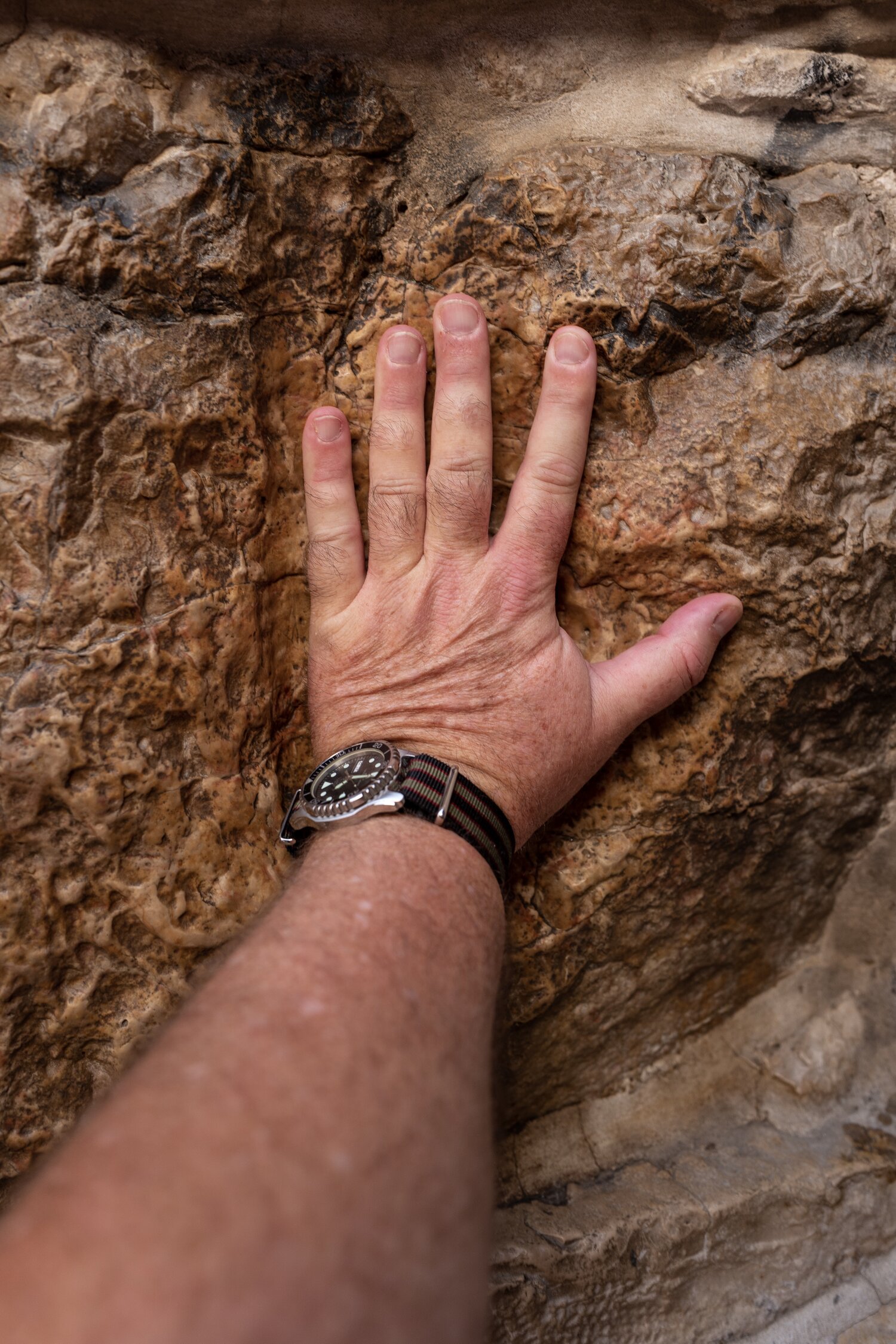MY 13TH EPISODE OF THE VILLAGE DIARIES.
Cabrières-d'Avignon: Chasing Shadows with a Leica on a Provençal Afternoon
In the South of France, time is a slippery concept. In Provence, particularly in the small, medieval village of Cabrières-d'Avignon, the passage of time doesn’t just slow down—it lolls about in the sun as if it has nowhere better to be. Which, let’s be honest, it doesn’t. Cabrières-d'Avignon is a town that appears to have casually drifted from the 14th century to the 21st, picking up a few modern conveniences but never entirely shaking off its medieval core. Here, stone buildings—sturdy, beige, and sunbaked—seem to meld into the hillsides, their shutters closed tight, holding out against the relentless Provençal heat. Now, before we go any further, I should mention that I was visiting at what one might call the height of the day. That period when even the most industrious of locals surrender to the siesta, leaving the village streets eerily silent. Of course, I didn’t have that option—travel bloggers (especially those armed with a Leica) have no time for siestas. Instead, I wandered the sun-bleached streets, the soles of my shoes making that distinct crunching sound against the gravel, like a summer insect stirring from its midday nap.
As I walked, my trusty Leica SL3 slung over my shoulder; it became clear that the village of Cabrières-d'Avignon is a photographer’s playground—albeit one where the slides and swings have been heated to frying-pan temperatures. You don’t come to places like this for grandiose cathedrals or bustling marketplaces. No, Cabrières-d'Avignon is the epitome of quiet beauty, a place where history lingers in the very air, and if you stand still long enough, you can almost hear the echo of centuries-old footsteps.
A Village Built of Stone (and Patience)
The first thing you notice about Cabrières-d'Avignon is the stone. Stone walls, stone houses, stone streets. In the midday sun, the entire village seems to shimmer, its pale limestone reflecting the light in a way that makes it appear as though the village itself might simply evaporate in a puff of ancient dust. These stones, by the way, are not just decorative—they are history itself. The village, like many in Provence, dates back to the medieval period, and many of the buildings still bear the architectural hallmarks of that era. Narrow streets wind between tightly packed houses, some of which haven’t changed much since the 12th century. The walls, rough and unyielding, tell a story of a time when this village was a strategic defensive post in the region. Even the shutters on the windows, painted in fading shades of blue and green, seem to hint at secrets long kept. Every doorway is an invitation to imagine life centuries ago, though today, of course, they remain firmly closed—perhaps more to keep the tourists out than the heat.
I paused in the shadow of one such doorway to adjust the settings on my camera. The harsh midday sun in Provence is a challenge for any photographer, even one with a camera as forgiving as this Leica. But that’s the beauty of it, isn’t it? The challenge. If it were easy, everyone would do it. And besides, there’s something satisfying about capturing the perfect shot in imperfect conditions. It’s like hitting a hole-in-one while wearing a blindfold. Almost. I set the camera to underexpose slightly—compensating for the blinding sunlight—and snapped a few shots of the cobbled street in front of me. The contrast between the deep shadows and the sun-drenched stone was sharp, almost jarring, but somehow fitting for a place like Cabrières-d'Avignon. A village this old should look a little worn at the edges, don’t you think?
A Deserted Square (Almost)
As I continued my wander through the village, I found myself in the central square—or what passes for one in a place as tiny as this. It was, unsurprisingly, deserted. Not a soul in sight. It’s a curious thing about Provence in the summer: the villages are practically ghost towns between the hours of noon and 3 p.m. It’s as if the entire population has agreed to a collective nap, leaving only the cicadas and tourists to bake in the sun. I took a seat on a stone bench beneath a plane tree, its gnarled branches providing just enough shade to make the heat bearable. From my vantage point, I had a clear view of the village fountain—to my surprise, it was not dry; of course, this is Provence, and water is as much a luxury as air conditioning. I framed the shot carefully, the Leica’s lens capturing the contrast between the sun-scorched stone and the cool, leafy shadows cast by the tree. It was, I decided, the perfect encapsulation of Cabrières-d'Avignon: a village of contrasts, caught somewhere between past and present, between heat and shadow.
As I sat there, waiting for some sign of life to emerge from one of the shuttered houses, my mind wandered (perhaps influenced by the sun) to the history of the place. Cabrières-d'Avignon has, after all, been around for quite some time. It was once a key defensive village during the Wars of Religion in the 16th century, a fact that is still visible in its stone ramparts and narrow, easily defensible streets. But those days of strife are long gone. Today, the village is peaceful, almost somnolent—especially during the heat of the day. The only wars being waged now are those between tourists trying to find an open café and the relentless Provençal sun.
The Art of Patience (and Photography)
One of the lessons I’ve learned over the years, both as a hobbyist photographer and a traveler, is the value of patience. This is especially true in a place like Cabrières-d'Avignon, where nothing happens quickly. It’s easy to get frustrated when you arrive in a village and find everything closed, the streets deserted, and the sun beating down on your head like an overenthusiastic timpani player. But patience, as they say, is a virtue. So I waited. I waited for the light to shift, for a shadow to fall just right across a doorway, for a cloud to momentarily block the sun and provide some relief from the heat. And eventually, I got my shot. It wasn’t perfect—photography never is—but it was close enough. A narrow alley, framed by ancient stone walls, with the afternoon light casting long, lazy shadows. It is the kind of shot that might make someone sitting in an office far away dream of abandoning their desk and running away to a Provençal village.
The Return of Life (and Lunch)
As the afternoon wore on, life slowly returned to the village. The shutters creaked open, one by one, and the scent of rosemary wafted through the air as the local cafés prepared to reopen. I wandered down to the edge of the village, where the hills roll away toward the Luberon Valley, offering a breathtaking view of the surrounding countryside. Here, at least, there was a breeze—a small mercy on a day like this. I stood momentarily, taking in the view, my Leica dangling from my neck, ready to capture the scene. The light was softer now, the harshness of the midday sun giving way to the golden glow of late afternoon. It was the kind of light that made everything look just a little bit more beautiful and magical.
As I returned to the village, I passed by a small café that had finally reopened for the afternoon. The tables were set with crisp white linens, and the smell of great espresso filled the air. I took a seat, ordered a glass of water and a cafe alonge, and raised them both to the village of Cabrières-d'Avignon—a place where time moves slowly, but life, when it finally reappears, is as rich and full as the history etched into its stone walls. And as I sat there, sipping my coffee and reviewing the day’s photos, I realized that Cabrières-d'Avignon, with its ancient stones and sleepy streets, had given me something rare: the chance to stop, to wait, and to see the beauty in the quiet moments.
I hope you find today’s post to your liking and that it may just be the straw that breaks the camel’s back to get you to make this area your next adventure.
If you have a spare moment, please leave your thoughts in the comment box below the last image.
Live well!
M.



























